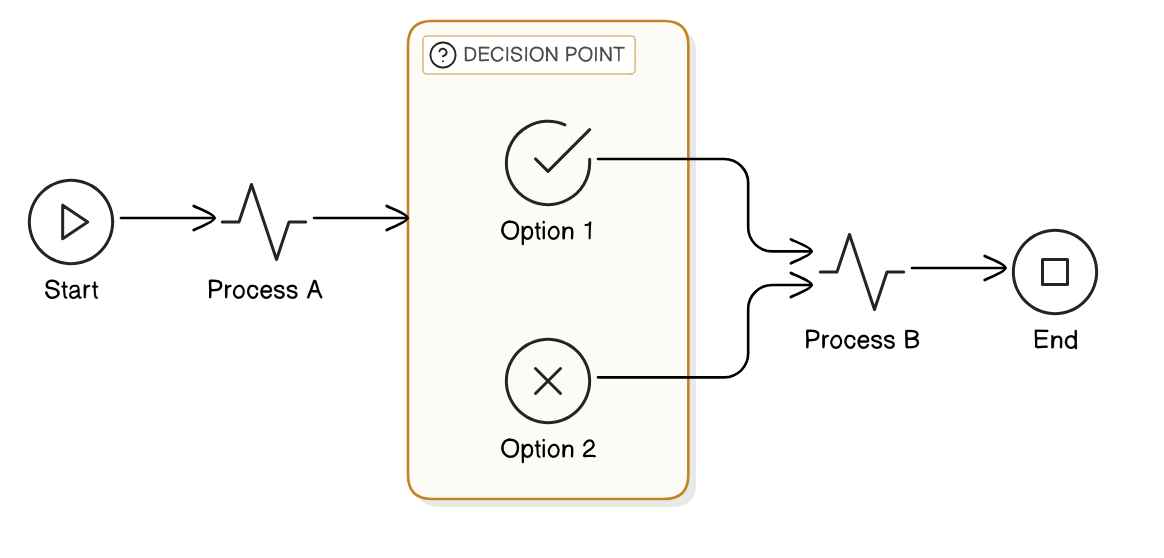Summary
In this article, we delve into how Romanian Deadlifts can significantly boost your shoulder health while highlighting their multifaceted benefits. Drawing from personal experience, I`ve witnessed firsthand how these exercises can transform not just strength but also stability in the shoulders. Key Points:
- Explore the novel application of Romanian Deadlifts (RDLs) for enhancing shoulder stability and neuromuscular control.
- Learn how to optimize RDL variations to target specific shoulder muscles effectively, adjusting grip width and tempo for personalized workouts.
- Discover the synergistic effects of integrating RDLs with advanced rehabilitation techniques to improve functional outcomes and prevent injuries.
Unlocking Shoulder Strength: Why Romanian Deadlifts Matter?
My First Romanian Deadlift: A Story of Frustration and Discovery
Frustration bubbled up as sweat trickled down my forehead. Seriously, how could this be so difficult? After three more tries—each ending with me feeling like a pretzel twisted in knots—I glanced at the clock; it was already 6 PM. “Maybe today just isn't my day,” I sighed to no one in particular. The weight felt heavier than it should have—not just physically but mentally too. It was a reality check that left me wondering if I'd ever get this right.
| Exercise Type | Target Muscles | Benefits | Common Mistakes | Variations |
|---|---|---|---|---|
| Romanian Deadlift (RDL) | Hamstrings, Glutes, Lower Back, Core | Strengthens posterior chain, Improves stability and strength, Reduces lumbar strain | Excessive knee bending, Incorrect bar path, Rounding the back | Single-leg RDL, Dumbbell Romanian Deadlift |
| Traditional Deadlift | Hamstrings, Glutes, Lower Back, Quads | Overall body strength development, Enhances grip strength | Lifting with a rounded back, Not engaging core properly | Sumo Deadlift, Trap Bar Deadlift |
| Stiff-Legged Deadlift | Hamstrings, Lower Back (less glute emphasis) | Isolates hamstrings more effectively than RDLs | Overextending the lower back during lift or descent | Dumbbell Stiff-Legged Deadlift |
| Kettlebell Swing | Glutes, Hamstrings, Core (dynamic focus) | Improves explosive power and endurance in posterior chain muscles | Not using hips to drive movement; letting arms take over | Two-Handed Kettlebell Swing |
| Good Mornings | Erector Spinae (Lower Back), Hamstrings | Enhances lower back strength and flexibility | Using too much weight; rounding the spine while lifting | Barbell Good Morning |
The Turning Point: Mastering the Romanian Deadlift Technique
"Hey," said the trainer who had shouted earlier, stepping closer. "You need to really focus on your hip hinge." His voice was calm but firm, cutting through my mounting frustration. My heart pounded; I could feel the weight not just on the bar but in everyone's eyes.
I glanced at the clock—it was now 6:20 PM—and all I could think about was how many people were watching me struggle. Some folks returned to their sets while others seemed glued to my process, almost waiting for a breakthrough or another flop. It was surreal—like being an unwilling star in a show where every misstep magnified under bright lights. The pressure hung thick in the air; we all felt it—even if no one would admit it aloud. And then… silence descended again.
Guiding You Through Your Romanian Deadlift Journey: A Step-by-Step Approach
We tried adjusting my stance and grip, but after a few more attempts, frustration lingered. "This isn’t working as planned," one team member remarked quietly, glancing at the weights that still felt too heavy. Another chimed in, “But we can’t give up now; maybe lighter weights will help,” while someone else shook their head skeptically.
Despite our efforts, each lift seemed a struggle against both gravity and self-doubt. The atmosphere remained tense—everyone could sense my uncertainty. As I took a break to gather my thoughts, I couldn’t shake the feeling that progress was still just out of reach. What lay ahead remained uncertain; would this approach truly lead to improvement?

 Free Images
Free ImagesRomanian Deadlifts: Frequently Asked Questions (FAQs)
Well, you're in for a treat! 🏋️♂️ Romanian deadlifts mainly focus on the posterior chain, which includes your hamstrings, glutes, and lower back. This exercise emphasizes the hip hinge movement—something we don't always think about but is crucial for maintaining good spinal alignment and reducing injury risks.
Another frequently asked question is: **"What equipment should I use?"** A lot of folks might default to barbells because they allow you to lift heavier weights. However, don’t disregard dumbbells! They can actually help improve your balance and let you isolate each leg more effectively. So if you're looking to spice up your routine, consider switching it up!
Now let's talk about form. A lot of beginners ask: **"How important is maintaining a neutral spine during the lift?"** Honestly, it's everything! Maintaining that neutral spine helps prevent undue stress on your lumbar region – trust me; I've seen too many avoidable injuries happen due to poor form.
You might also be curious about progression: **"How do I know when to increase my load?"** It’s essential to focus on mastering your form first before piling on the weight. Gradual increases are key not just for strength development but also for supporting shoulder health alongside core stability.
Lastly, many people worry about overtraining with this exercise: **"Is there a risk if I go too hard?"** Absolutely! Starting slow and prioritizing technique over heavy loads will make all the difference in preventing injuries while maximizing results. Remember that fitness is a marathon, not a sprint! 💪
So whether you're new or experienced with Romanian deadlifts, these insights can help you optimize your workout while keeping those shoulders healthy and strong!
Beyond the Basics: Exploring Variations of the Romanian Deadlift?
Romanian Deadlifts vs. Conventional Deadlifts: Which is Right for You?
Perfecting Your Form: A Practical Guide to Romanian Deadlifts
Romanian deadlifts are a fantastic exercise for building strength in the posterior chain, which includes the hamstrings, glutes, and lower back. However, mastering this movement is crucial not only for effectiveness but also for shoulder health. I recommend these steps because they can help you avoid common pitfalls that many people encounter when starting out. Trust me; I’ve seen countless individuals struggle with form and suffer unnecessary strains. By following this guide, you'll be on your way to executing perfect Romanian deadlifts while protecting your shoulders.
#### Step-by-Step Guide to Performing Romanian Deadlifts
1. **Set Up Your Equipment**
Begin by selecting a barbell or dumbbells made of high-quality steel to ensure durability. It’s essential that they have an appropriate grip texture to prevent slipping during your workout.
2. **Position Yourself Correctly**
Stand with your feet hip-width apart and hold the weights in front of you at thigh level with a neutral grip (palms facing you). This alignment helps maintain stability throughout the lift.
3. **Initiate the Hip Hinge**
Now comes the most critical part: hinge at your hips while keeping a slight bend in your knees. Imagine pushing your hips back as if you're trying to close a car door with them—this will engage the right muscles effectively.
4. **Maintain a Neutral Spine**
As you lower the weights toward the ground, keep your spine straight and core engaged. Avoid rounding your back; maintaining this position protects both your spine and shoulders from strain.
5. **Control Your Movement**
Lower the weights until you feel a stretch in your hamstrings—but don’t go too far! Stop when you reach about mid-shin level or just below knee height, depending on flexibility.
6. **Return Smoothly**
To return to standing, push through your heels and drive those hips forward without overextending at the top of the lift—it might be tempting but resist! This ensures you’re not putting undue stress on your shoulders.
7. **Focus on Slow Reps**
Remember that slow controlled movements enhance muscle engagement while minimizing injury risk (I often set a timer ⏱️ for each rep's duration—helps keep me accountable!).
#### Advanced Tips & Reminders
If you're looking to further refine your technique or add variety once you've mastered standard Romanian deadlifts, consider incorporating single-leg variations or resistance bands for added challenge! Additionally, always listen to your body; if something feels off or painful beyond normal muscle fatigue, it might be worth revisiting form or consulting with a fitness professional.
By prioritizing proper form and being mindful of these tips, you'll not only improve shoulder health but also maximize gains from this powerful exercise! If you're up for it after mastering these basics, try gradually increasing weight as long as it doesn’t compromise form—you’ll be amazed at how quickly you'll progress!

Overtraining Concerns: How to Avoid Shoulder Injuries with Romanian Deadlifts?
Strengthening Your Shoulders: Long-Term Benefits and Next Steps
As you incorporate Romanian deadlifts into your routine, remember that proper form is crucial. Maintaining a neutral spine while hinging at the hips ensures that stress is distributed effectively across muscle groups rather than joints. This attention to technique helps prevent injuries and fosters sustainable progress in your fitness journey.
Moreover, progressive overload—gradually increasing weight or repetitions—is essential for muscle adaptation without risking overtraining. To further enhance shoulder health, consider integrating other shoulder-specific movements alongside Romanian deadlifts. This balanced approach will contribute to a well-rounded physique while minimizing injury risks over time.
Now is the perfect opportunity to take charge of your fitness journey! Explore how these principles can fit into your existing routine or motivate you to start anew. The trends in fitness are ever-evolving; it’s up to us to adapt and harness them for our growth. Dive into this journey today and witness firsthand how strengthening your shoulders can lead to lasting benefits!
Reference Articles
The Ultimate Guide to Romanian Deadlifts PLUS The Best Variations
The Romanian Deadlift might be one of, if not the best hamstring exercise to develop a strong and muscular posterior chain (backside of our body).
Source: gymshark.com9 Best Deadlift Variations for Workouts for Strength and Muscle
These deadlift variations will allow you to built up your lower body, back, core, and grip, whether you use a barbell ...
Source: Men's HealthVariations of Romanian Deadlifts (RDL)
The Romanian Deadlift (RDL) is unequalled in increasing the strength in the lower back, hamstrings and the glutes, working ...
Source: Where The Strong BelongRomanian Deadlift Breakdown: Muscles Engaged and Technique
"The Romanian deadlift primarily targets the hamstrings, glutes, lower back, and core muscles. This exercise is excellent for strengthening ...
Source: SportiveTricks.coAn Electromyographic Analysis of Romanian, Step- ...
The present study examined the posterior chain muscle excitation in different deadlift variations. Ten competitive bodybuilders (training ...
How To Do The Romanian Deadlift
A frequent form error is excessive knee bending, akin to a Traditional Deadlift vs Deadlift variation like the Sumo Deadlift or the Barbell ...
Source: Athlean-XWhat muscles does deadlift work? How-to, variations, and more
Romanian deadlift: This common variation targets the hamstrings and most posterior muscles. · One leg, one arm dumbbell deadlift: This exercise ...
Source: MedicalNewsTodayRomanian deadlift
The bar descends slowly and closely to the thighs instead of being directly underneath the shoulders, reducing the torque on the lumbar spine by placing the ...
Source: Physiopedia


 ALL
ALL Sports Data Science
Sports Data Science
Related Discussions